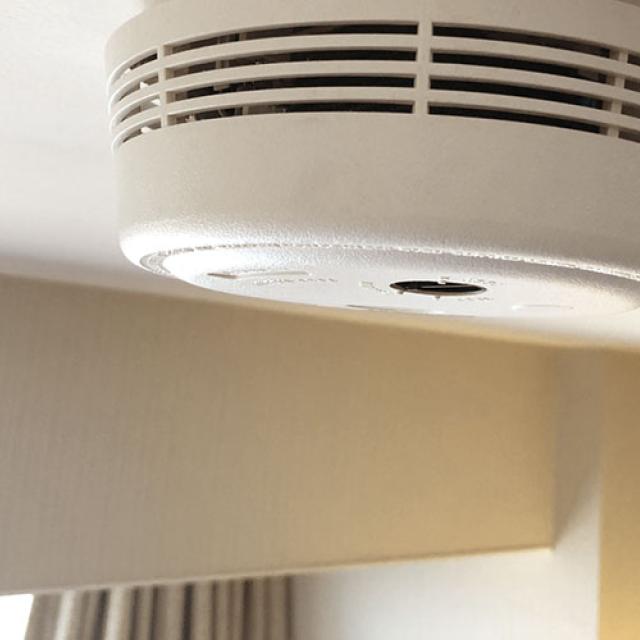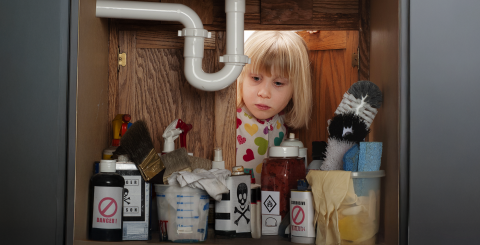Tips on Installing and Maintaining Smoke and Carbon Monoxide Detectors

Every home should have at least one smoke detector per floor, including the basement. You can also add carbon monoxide (CO) detectors. Together they provide protection by alerting you if there is smoke or carbon monoxide in your home. Here are a few safety tips to make sure they keep doing their job properly, day in, day out.
Where to install smoke detectors
As indicated above, you need to install one per floor. Your apartment, condo, house, or duplex apartment must have a smoke detector:
- In the basement
- On the ground floor
- On the first floor
- On every other floor
Location, location, location... Put them in a central location such as:
- In the corridor near the bedrooms
- At the entrance, near the stairs
It’s important to ensure that everyone living in your home can hear the alarm when asleep. If not, install a detector in the bedrooms of those who cannot. If your house or corridors are too big, you can install two per floor or per corridor, at a good distance apart and near key locations.
Install them on the ceiling or a wall:
- On the ceiling at least 10 cm (4 in.) from the wall
- On a wall 10 to 30 cm (4 to 12 in.) from the ceiling
- 100 cm (40 in) from a fan, air conditioner, air intake, or air return
- Make sure there are no obstacles such as beams, doors left open, etc., between a possible source of smoke and the detector.
Why install carbon monoxide detectors
As their name indicates, they detect carbon monoxide in the air. Carbon monoxide is an invisible, odorless, tasteless, nonirritating gas. Humans and most other mammals can’t detect it, but it is extremely toxic, and sometimes fatal. It is the result of incomplete combustion of fossil fuels such as natural gas, fuel oil, gasoline, coal, and wood.
The main sources in a house or apartment can be:
- Fireplaces and wood-burning stoves
- Natural gas or fuel oil furnaces
Exhaust in a garage, shed, or carport where gas-powered vehicles and equipment are operated or stored:
- Car
- Motorcycle
- ATV
- Snowmobile
- Lawn mower
- Snowblower
- Generator
- Household appliances that use natural gas:
- Range
- Refrigerator
- Water heater
- And more
Carbon monoxide sources can pose a risk if:
- They are in a poorly ventilated space
- They are broken or poorly maintained
- A chimney has not been regularly cleaned or is partially or completely blocked
- A gas-powered vehicle or device is operated in a garage, shed, or carport
Where to install carbon monoxide detectors
If you need to install them, do so in the following locations:
- Each floor of the house
- Near sleeping areas such that the alarm can be heard even when the doors are closed
- Near the door to a garage attached to the house
- In rooms above a garage attached to the house
Unlike smoke, carbon monoxide spreads evenly through the air, so you can install your detectors at any height. However, be careful to:
- Place them out of the reach of children and pets
- Choose a location where they’re easy to check and maintain
- Install them as you would a smoke detector if you have a combined CO/smoke model
How to maintain smoke and carbon monoxide detectors
Regular maintenance is key to ensuring your detectors keep on working effectively.
For smoke detectors:
- Test the detector by pressing the test button until the alarm sounds. It can take a few seconds.
- Replace battery-operated detectors, or replace hard-wired detectors or have them repaired, if they fail the alarm test.
- Replace the battery when a detector beeps intermittently.
- Always use the type of battery recommended by the manufacturer.
- Never use a rechargeable battery unless recommended by the manufacturer.
- Replace the batteries when you move into a house or apartment.
- Use a long-lasting battery such as a lithium battery.
- Vacuum the inside and outside of detector housings with a soft brush at least once a year.
- Never paint a smoke detector.
For your carbon monoxide detectors, you should:
- Test them by pressing the test button until the alarm sounds. It can take a few seconds.
- Replace any detectors that fail this test.
- Regularly replace the batteries, e.g., at the spring and fall time changes.
- Use long-lasting batteries such as lithium batteries.
- Never test detectors by holding them over a car exhaust pipe.
- Clean the outside of the detector once a month with a vacuum cleaner equipped with a soft brush.
- Do not use water, household cleaning products, or solvents to clean them.
- Replace your detectors about every 84 months/7 years or according to the manufacturer’s instructions.
And that’s it! Now you know why and where to install smoke and carbon monoxide detectors in your home. You also know how to properly maintain them. It’s the sure way to protect yourself and your loved ones in case of fire and to prevent carbon monoxide poisoning.



